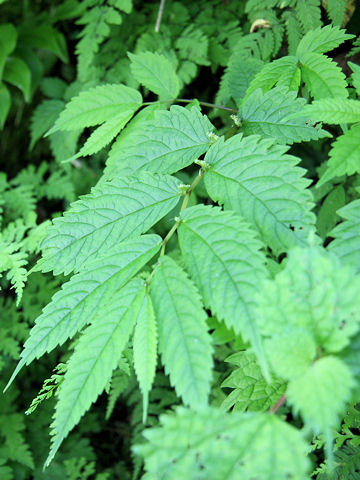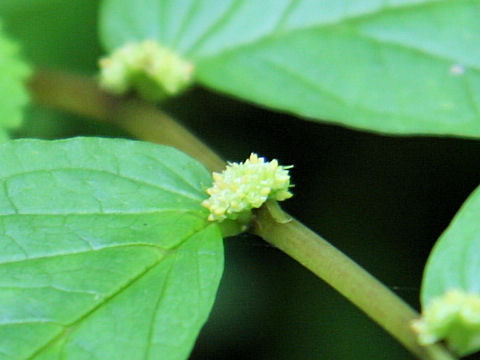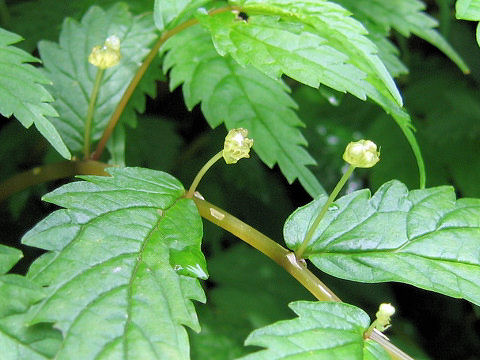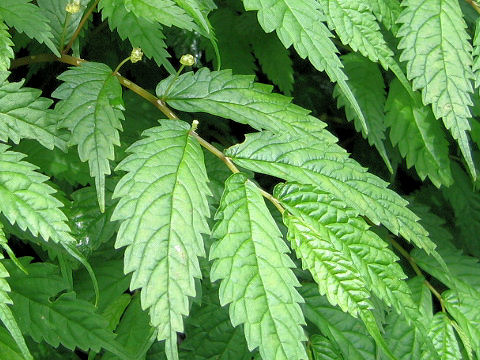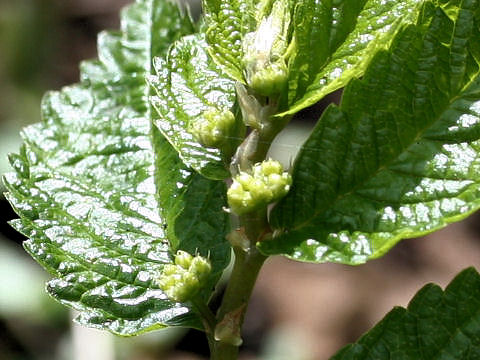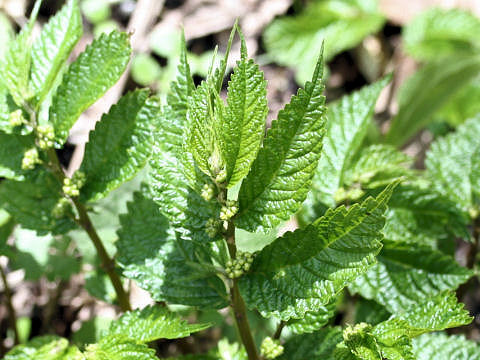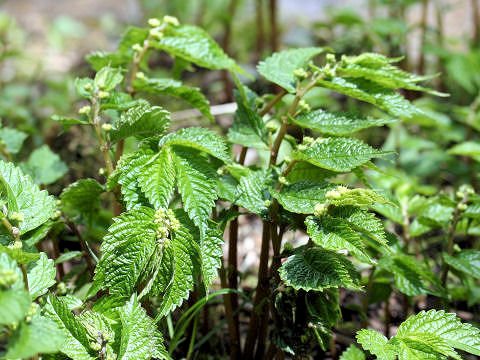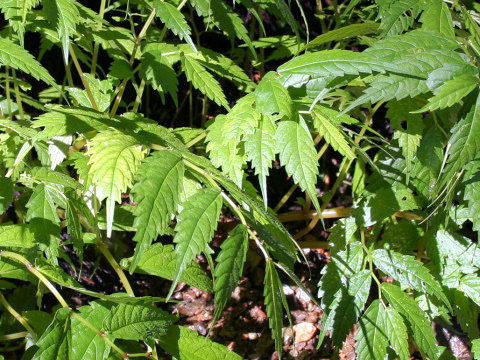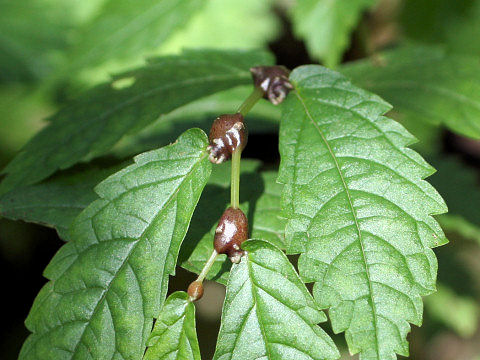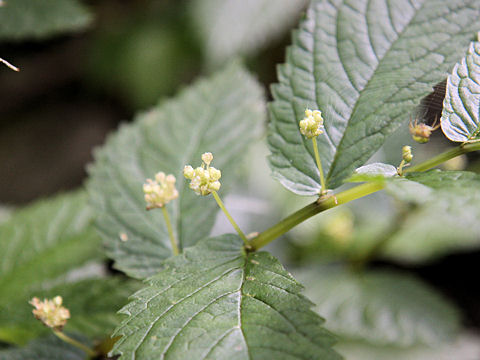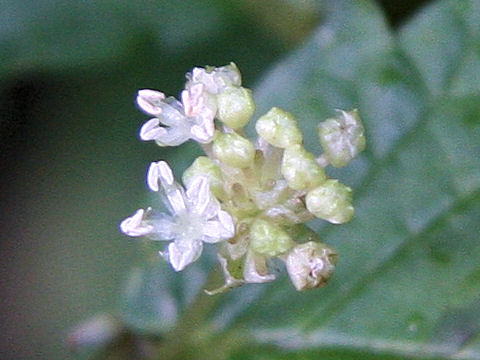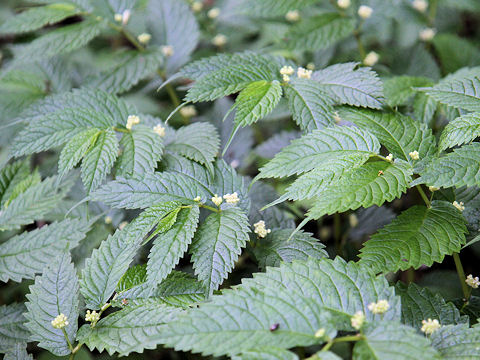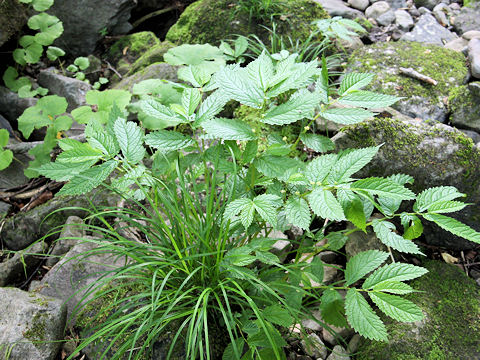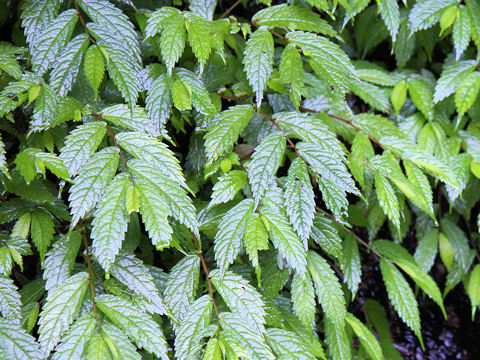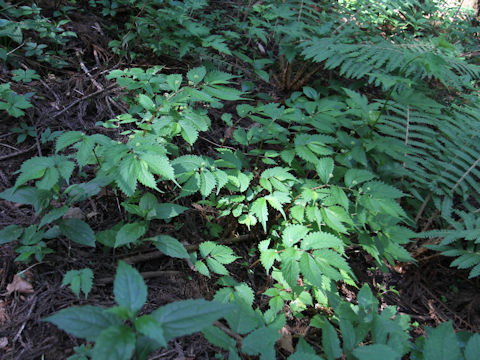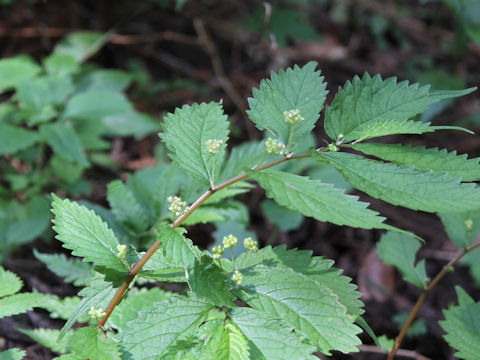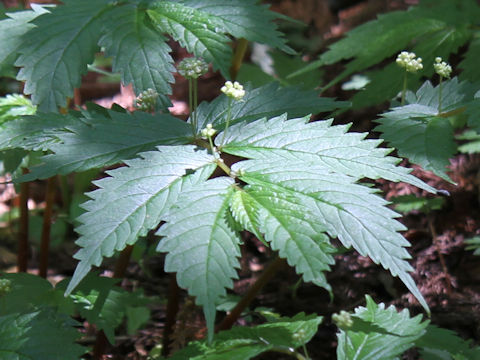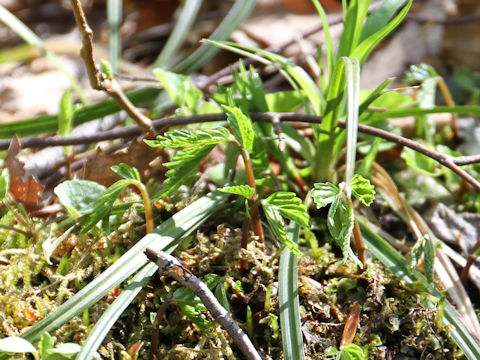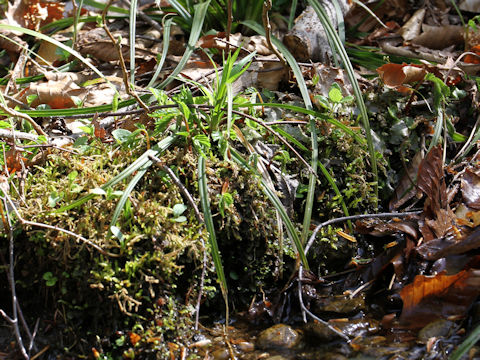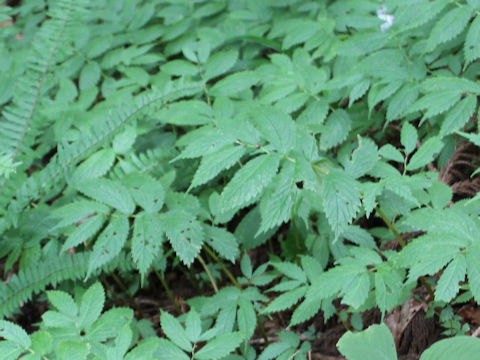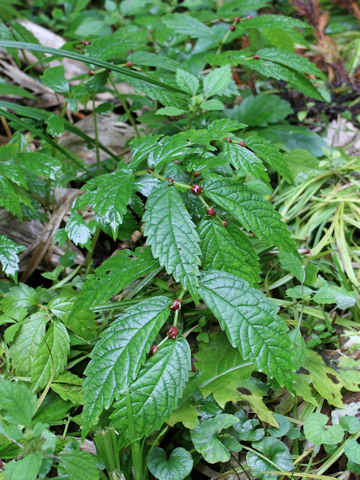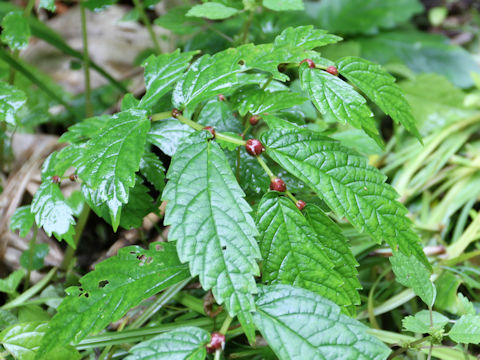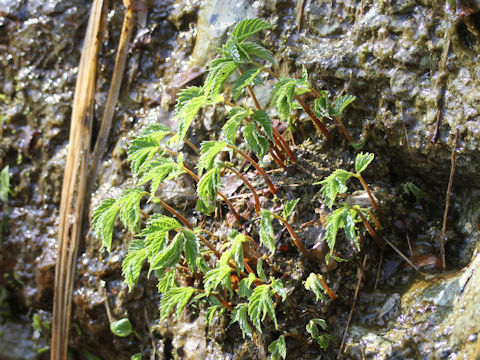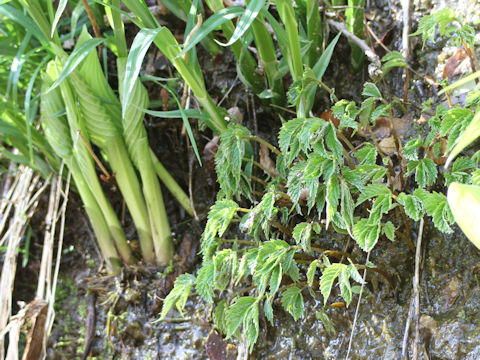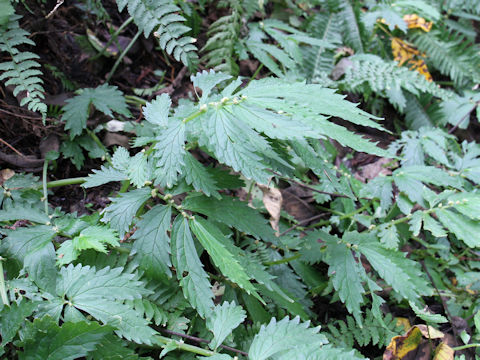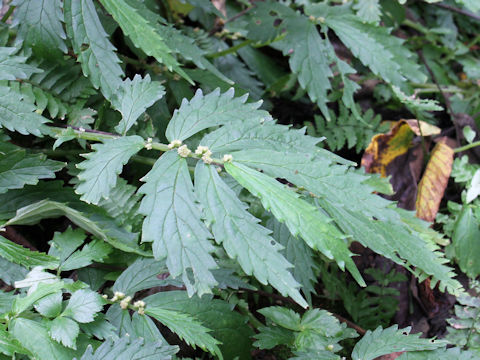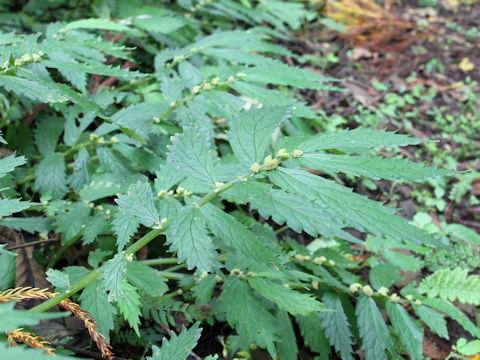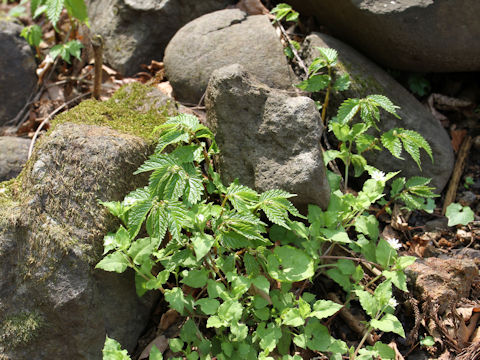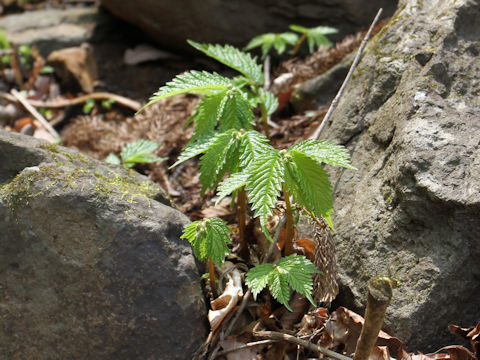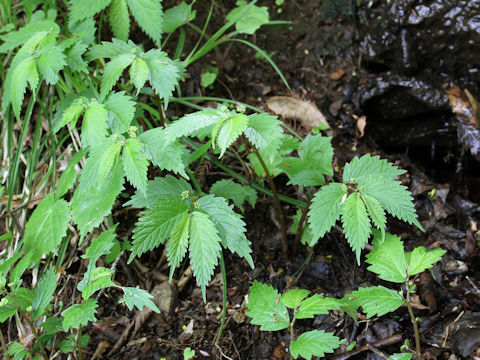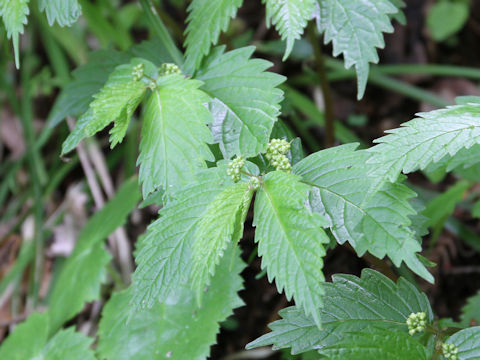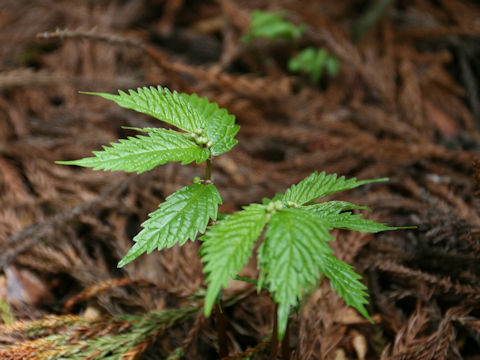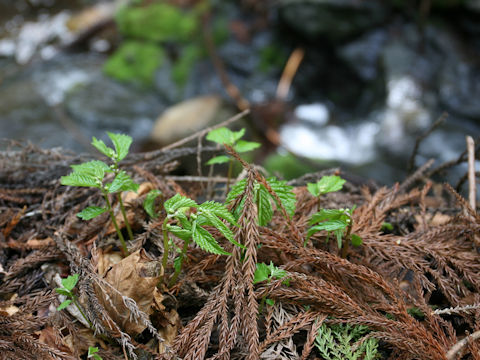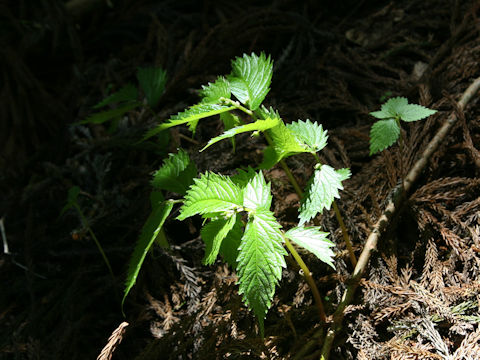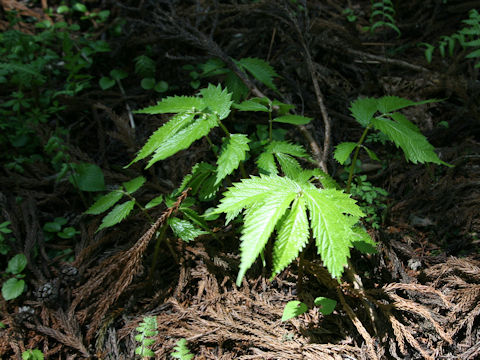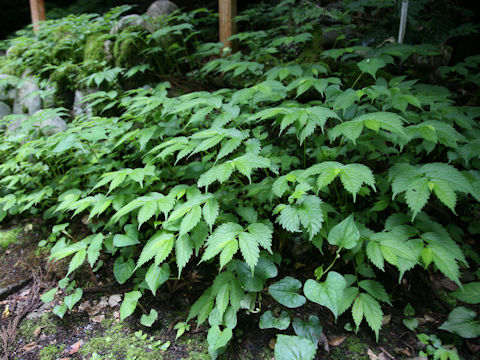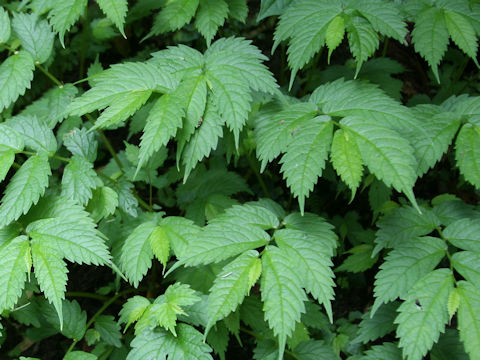
|
|
|
|
−− もっと見る(Show more)−−
−− 閉じる(Close) −−
|
|
|
|
わが国の各地をはじめ、朝鮮半島や中国に分布しています。山地の湿った斜面に群生し、茎はみずみずしくて高さは30〜40センチになります。雌雄異株です。葉はゆがんだ長楕円形で、縁に粗い鋸歯があります。4月から9月ごろ、花を咲かせますが、雄花序には短い柄があり、雌花序にはありません。秋には茎の節が膨らんで珠芽(むかご)となり、地面に落ちて増えます。和名は蟒蛇(うわばみ)のいそうなところに生えることから。東北地方では「みず」と呼んで山菜に利用されます。中国語では「楼梯草(lou ti cao)」と呼ばれます。 |
|
|
イラクサ科ウワバミソウ属の多年草で、学名は Elatostema umbellatum var. majus (syn. Elatostema involucratum)。英名はありません。 |
|
|
The "Uwabami-so" (Elatostema umbellatum var. majus) belongs to Urticaceae (the Nettle family). It is a perennial herb that is native to all over Japan, the Korean Peninsula and China. This herb grows in montane wet slopes, and forms a clump, and it can reach 30-40 cm in height. It is dioecious. The leaves are irregular oblong with coarsely-toothed edges. The flowers come in April through September. It flowers from April to September, with short stalks on the male inflorescences and none on the female inflorescences. In the fall, the nodes of the stem swell to form bulbils, which fall to the ground and multiply. Its Japanese name comes from the fact that it grows in places where huge snakes are likely to be found. In the Tohoku region, it is called "mizu" and is used as a wild vegetable. In Chinese, it is called "楼梯草" (lou ti cao). |
|
|
[上・中1] 長野県松本市安曇「奈川乗鞍林道」にて、2007年08月01日撮影。 [中2・中3] 群馬県上野村楢原「ぶどう岳」にて、2005年07月10日撮影。 [中4〜中6] 長野県安曇野市穂高有明「中房渓谷」にて、2006年05月10日撮影。 [中7] 滋賀県多賀町霊仙「霊仙山」にて、2005年09月09日撮影。 [中8] 岐阜県揖斐川町春日川合「伊吹山」にて、2005年10月09日撮影。 [中9〜中12] 福島県北塩原村桧原「雄子沢川」にて、2009年06月27日撮影。 [中13] 群馬県中之条町上沢渡「反下川林道」にて、2008年07月26日撮影。 [中14〜中16] 福島市松川町水原にて、2014年05月31日撮影。 [中17・中18] 山形県小国町「岩魚沢」にて、2016年04月24日撮影。 [中19] 福島県会津若松市「羽黒山神社」にて、2016年09月11日撮影。 [中20・中21] 山形県小国町小玉川にて、2017年10月21日撮影。 [中22・中23] 同上にて、2018年04月21日撮影。 [中24〜中26] 山形県小国町玉川にて、2019年10月07日撮影。 [中27・中28] 宮城県仙台市太白区坪沼にて、2020年04月30日撮影。 [中29・中30] 同上にて、2020年05月07日撮影。 [中31・中32] 同上にて、2021年04月18日撮影。 [中33・中34] 宮城県加美町「薬莱山」にて、2023年04月27日撮影。 [中35・下] 宮城県大河原町大谷「大河原昆虫公園」にて、2024年06月05日撮影。 |

|
|
Shu Suehiro |
